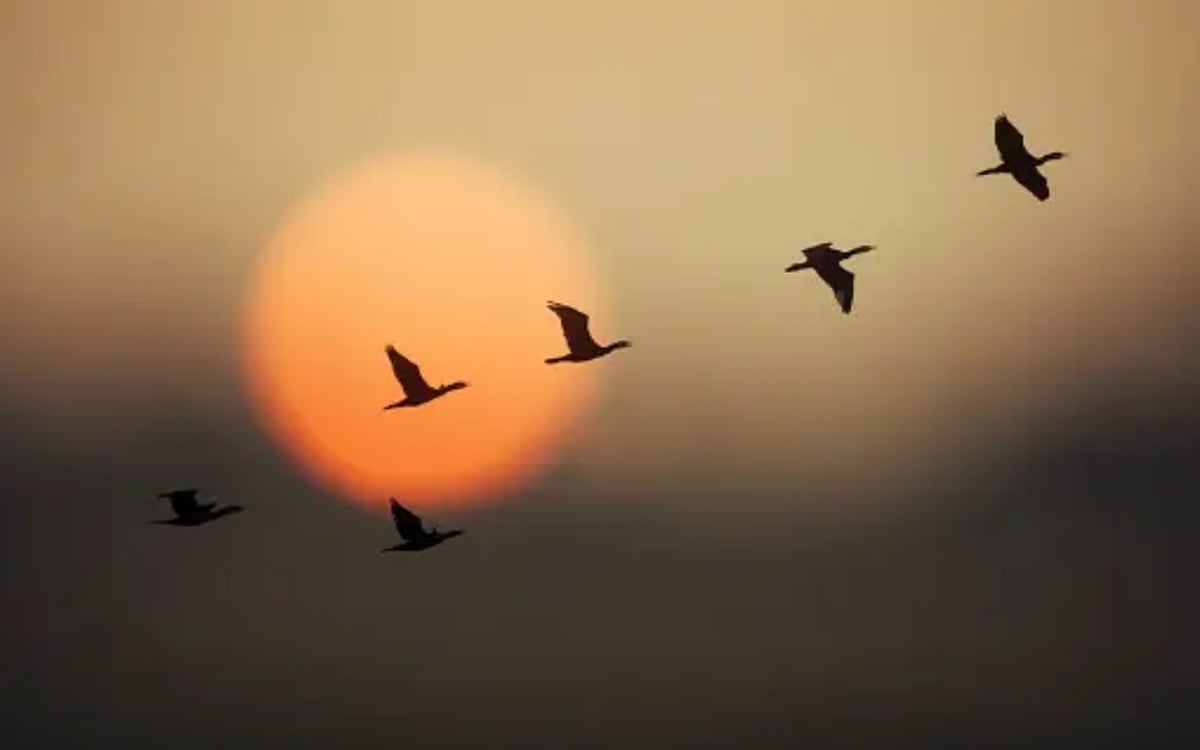Ranchi, Abhishek Roy: With the arrival of autumn, migratory birds start gathering across the state. Till a few years ago, hundreds of migratory birds were seen in the capital Ranchi and various reservoirs of the state. Whereas this time due to war circumstances the number of birds arriving from North and South Asian countries is less. Bird watchers say that compared to 2022, the number of birds that came in the second week of December is less. A large number of migratory birds used to reach Ranchi from Siberia, Russia, Africa, Europe, Afghanistan and south-western countries, but this time their number is less. Where earlier large flocks of birds of the same species were seen together in numbers of 250 to 300, this time they are seen in small groups. Former PCCF Wildlife cum Former Chairman Biodiversity Board Lal Ratnakar Singh said that the number of migratory birds has decreased. Due to the war situation in the country and abroad, there is more activity of the Air Force in the sky. Pollution levels have increased due to explosives. On the other hand, many tests are also being conducted in the sea and this has had a direct impact on the bird route. Birds are also facing problems due to lack of contemporary conditions.
This time the number of small migratory birds is more
This time the number of duck species has decreased in the city’s reservoirs. Patratu Dam has small flocks of Siberian Seagulls, while the surrounding forest areas like Bodeya, Rukka, Kanke, Horhab, Jonha’s Hapatbeda, Koinardih, Jagra Hills, Radhu River, Kherwatirka, Patratu, Ormanjhi have small numbers of migratory birds. The numbers are high. These include birds such as black redstart, black-headed bunting, bluethroat, Blythe’s reed warbler, cone kestrel, common rosefinch, Eurasian coot, gargantuan, grey-bellied cuckoo, hummock’s warbler and Siberian rubythroat, sulphur-bellied warbler and verditor flycatcher. These birds, flying thousands of kilometers from countries like Sumatra, South-East and Western Europe, United Kingdom, Bangladesh, Siberia and Russia, are seen in the forests of the capital and the state.
Siberian rubythroat and black headed bunting seen for the first time
For the first time in the forests of the capital, Siberian Rubythroat and Black Headed Bunting, small birds found in South-East Europe, are being seen coming from Siberia.
Siberian Rubythroat
These birds come near wet areas to breed. The adult male Siberian rubythroat has a red throat and black and white stripes on the body. They are also called singing birds.
black headed bunting
In these birds, males are identified by the black color on their head, bright yellow collar, yellow and brown stripes on the lower part. Whereas the female is completely brown in color, with a light yellow spot on her hole and yellow marks on her tail. Their chirping is like that of sparrows. (There is a picture of the male and the mother)
Many types of hawks and vultures are also seen
Many types of hawks and vultures are seen in forest and humid areas. Among these, big birds like White Rumped Vulture, Os, Pied Harrier, Steppe Eagle, Western Marsh Harrier are seen in pairs.
Migratory birds are preparing chicks
This time, migratory birds like Morhen, Pygmy Goose and Pheasant Tailed Jacana are seen nourishing their chicks in the reservoirs of Hazaribagh. These birds spend time around urban water bodies during their migration period. After hatching from the eggs, the babies move towards their next destination only after training them.

